This week, DC Comics, along with former My Chemical Romance frontman Gerard Way, is bringing back Doom Patrol. This team of superpowered misfits has been around for decades, and this isn’t the first time they have been brought back. In fact, it’s kind of their thing. Here’s what you need to know about DC’s “latest” superteam.
The Origins
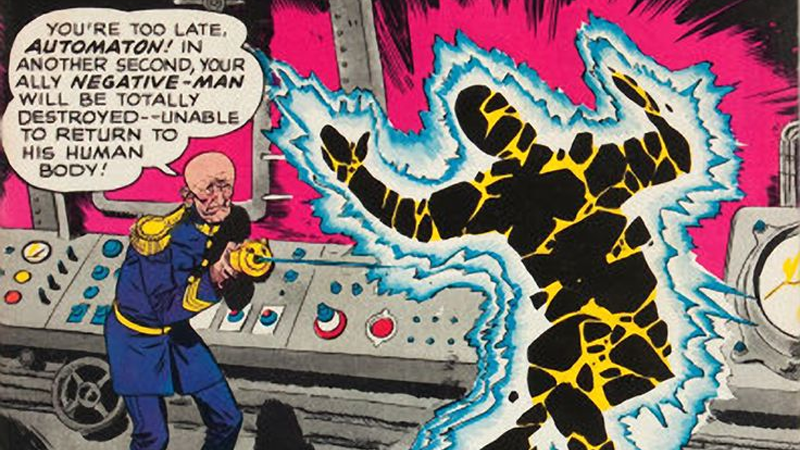
The Doom Patrol came about, surprisingly for a team that would focus on people regarded as outsiders in society, due to a need for new superheroes. In 1963 DC Comics was in the process of converting many of its comic books from the golden age into superhero-focused series — and writer Arnold Drake was tasked with turning one such series, the sci-fi adventure anthology My Greatest Adventure, into a new superhero book.
Working with fellow writer Bob Haney and artist Bruno Premiani, Drake came up with the idea for the Doom Patrol: A group of people who were given superpowers under freakish circumstances, and outcast from society due to their unnatural natures. Lead by the paraplegic genius Niles Caulder — known as “The Chief” — the original team included Elasti-Girl, who could alter her size at will; Negative Man, who was riddled with radioactivity and could emit negative energy from his body; and Robotman, a man whose brain was encased in an android body following a horrific accident.
Unlike your typical superheroes, the Doom Patrol didn’t really see themselves as heroes — they saw their powers as illnesses and curses, afflictions that had destroyed their lives. It was only through Caulder’s guidance that they turned to superheroics, taking on supernatural threats and other misfits.
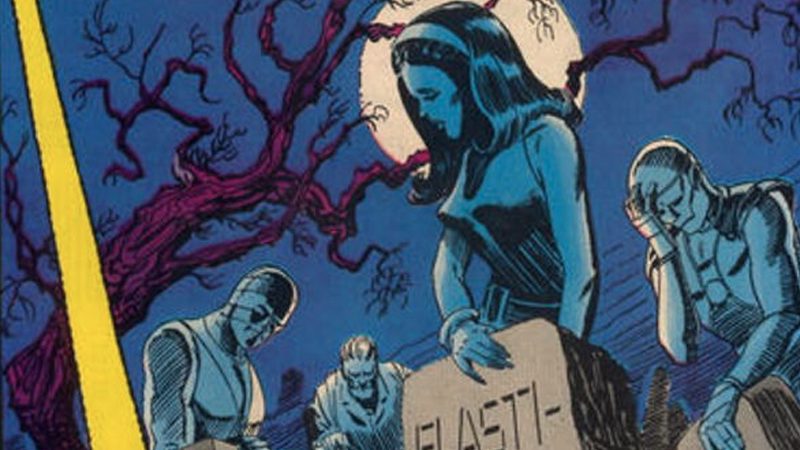
The series was initially a big success — it took just six issues for My Greatest Adventure to be renamed Doom Patrol — but after five years, interest was waning and the book faced imminent cancellation by DC. Drake decided to bring a further finality to the series when it came to an end in October 1968 by killing off the entirety of the Doom Patrol. (The team sacrificed their lives to protect a fishing village in Maine.) Drake, Premiani and series editor Murray Boltinoff appeared at the front and back of the issue, asking fans to write to DC to resurrect the team from their explosive fate — but it would take almost a decade for their request to be granted.
The Return
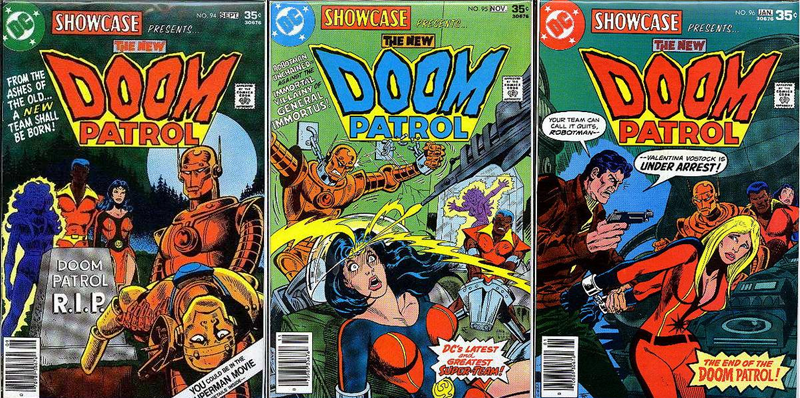
In an attempt to revive Doom Patrol, Paul Kupperberg and Joe Stanton created a new incarnation of the team for a story in Showcase #94 in 1977. Only Robotman would return from the original team, having survived the blast that killed the rest of his allies, alongside Negative Woman (a Russian cosmonaut possessed with the radioactive energy spirit of Negative Man), Tempest (a Vietnam deserter who could shoot energy pulses out of his hands) and Celsius — a woman who could manipulate temperature and shoot blasts of heat and cold who also claimed to be the wife of Niles Caulder.
Following a three-issue trial run, the team failed to generate enough interest to get a series, instead making cameo appearances across a variety of DC titles over the ’70s and ’80s. It wouldn’t actually be until 1987 that DC would give the team a new series (adding a few more heroes like magnetic-powered Lodestone, naive energy manipulator Scott Fischer and defensive psychic Karma), only for Kupperberg to leave after just 18 issues. Grant Morrison was brought in to carry on the series, working with Kupperberg to trim down the team in their now-traditional style of dying horribly (or in Karma’s case, running off from the law to become a member of the Suicide Squad, and perish on his first mission).
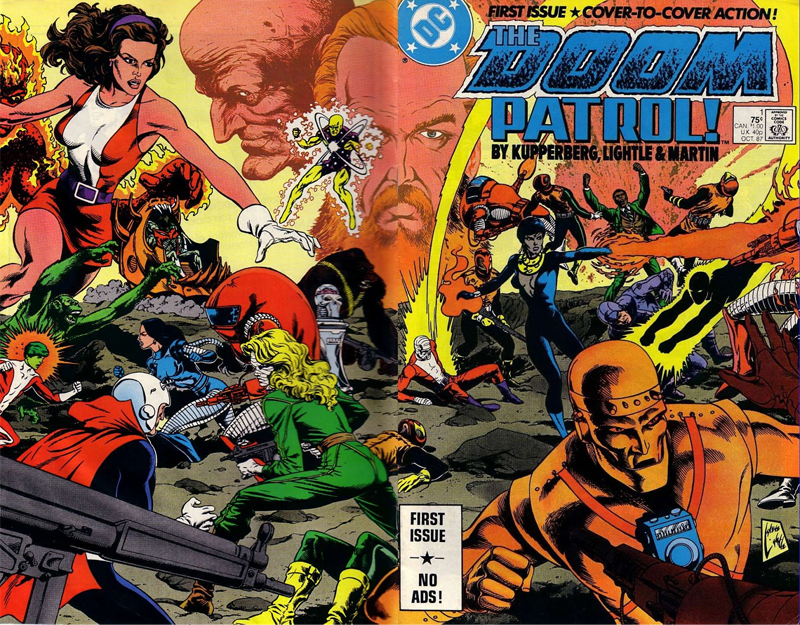
Morrison took the opportunity to get totally weird with the series, in what would become its most famous run. He introduced heroes like Crazy Jane — a woman with 64 individual personalities within her consciousness, each with their own superpower — or Danny the Street, a sentient stretch of road (no really!). Doom Patrol became a psychedelic, experimental series, with Morrison tackling tales based on surrealism or parodies of the “extreme” superhero comics of the ’90s, and giving the team bizarre villains unlike anything else coming out of DC’s roster. Morrison’s run became a cult classic because of its kooky storytelling — even Arnold Drake was a huge fan — and Morrison wrote the series for 45 issues.
After revealing that original team leader Niles Caulder had secretly been manipulating the Doom Patrol, creating the accidents that gave them their powers so he could form the team in the first place, Morrison left Doom Patrol in the hands of Rachel Pollack from Doom Patrol #64. With the title now officially part of DC’s Vertigo imprint (having become perhaps too niche and weird for DC’s normal output), Pollack continued Morrison’s trademark brand of weird with the series, while branching out into commentary on sexuality and religious imagery.
She even introduced one of the first-ever transgender superheroes to the team: Coagula, a former sex worker who could solidify and dissolve matter with a touch. However, with Morrison’s departure the series’ popularity began to wane, and Pollack’s run came to an end with issue 87 in 1995, though not before, in true Doom Patrol style, killing off a few characters, like Niles Caulder (again). You’re noticing a pattern here, right?
Try and Try Again
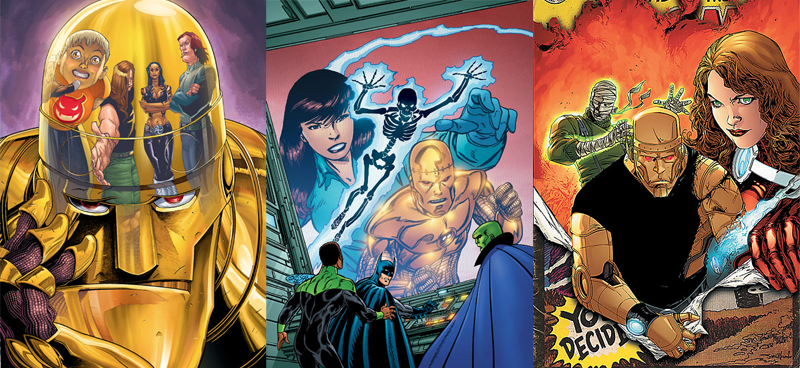
Following the end of Pollack’s series, there were two failed attempts to bring Doom Patrol back in the 21st century. In 2001, John Arcudi and Tan Eng Huat launched a new series as part of DC’s main roster rather than through Vertigo. Once again Robotman was the only returning character amongst a new team of heroes, but Arcudi and Huat’s series failed to ignite audience attention — it was decried “too normal” in comparison to Morrison and Pollack’s work — and cancelled after 22 issues.
John Byrne then wrote and illustrated a new series beginning in 2004; unlike past attempts, it was a complete reboot of the team’s continuity. The original team was brought together again “for the first time” — but the total reboot (and the fact that it completely erased Teen Titan and occasional Doom Patrol ally Beast Boy’s origins from DC canon) proved incredibly controversial. It lead to the series’ eventual cancellation after issue #18, and the resurrection of Doom Patrol’s original continuity in DC’s Infinite Crisis crossover event in 2006.
Three years later, Keith Giffen and Matt Clark tried once again to bring back the series, attempting to strike a balance between the tone of Morrison’s now-iconic run and the fresh start Byrne had attempted in his own series — but it wasn’t meant to be. With DC’s complete reboot of continuity with the New 52 quickly approaching, and poor sales, Doom Patrol was once again abruptly cancelled, leaving Giffen and Clark to info-dump the rest of their planned story arc in the series’ 22nd and final issue.
The New Way
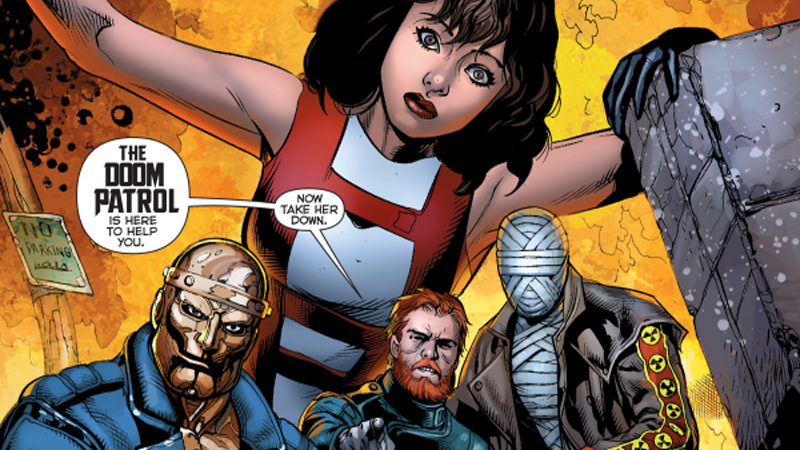
After a decade of failed experiments, DC were content to leave Doom Patrol alone for a while in the hubbub of the New 52 reboot. While they wouldn’t get their own series, a new Doom Patrol existed within the pages of Justice League — first with the team made by Kupperberg and Stanton in the ’70s, and then with the classic team (bolstered with the addition of Justice League member Element Woman). The subplot eventually revealed, as Morrision’s run had, that Niles Caulder was the sinister figure behind the team’s superpowered ailments, leading to a confrontation with the League. Following the revelation, the Doom Patrol were left to languish as minor characters within DC’s continuity… until this week.
Part of DC’s new “Young Animal” imprint — a new attempt at reinvigorating some of DC’s weirder properties like Doom Patrol — Gerard Way and Nick Derington’s series is in the vein of many of the past new attempts: There’s familiar faces like Robotman and Crazy Jane, and new faces like audience entry-point Casey Brinke. Whether it will match the success of Morrison and Pollack’s runs, or flicker out like the attempts of the 2000s remains to be seen. We’ll get a taste on Thursday.
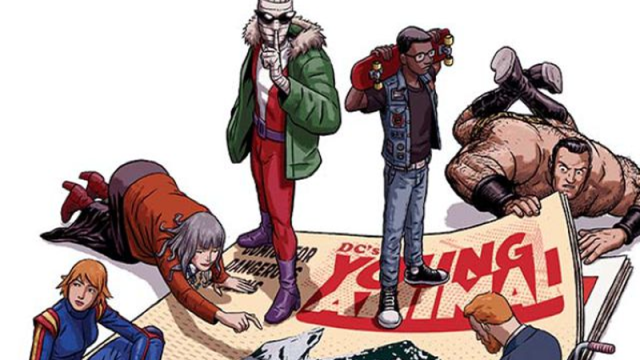
Comments
2 responses to “The Many Bizarre Lives Of DC Comics’ Doom Patrol, ‘The World’s Strangest Heroes’”
Grant Morrison’s run on Doom Patrol made it one of the greatest comics ever.
Seriously, it’s wacky, weird and wonderful and everyone should read it. Especially great, in one memorable arc, the Brotherhood of Evil reorganizes into the Brotherhood of Dada, gets the bicycle of LSD discoverer Albert Hoffman and uses it to power a surrealist presidential campaign.
This is a comic book that has a sentient transvestite street, called Johhny the street. He’s a transvestite because on his street is say, butcher shops with tinsel and glitter all over it. He rearranges shop signs to speak and just squeezes his street quietly into some other neighbourhood. In another great story, Flex Mentallo, greatest strong man in the world (inspired by those old ads in comic books to give nerds muscles), flexes the Pentagon into another shape.
And the little turns of phrase and monsters based on forgotten nursery rhymes. All so good.
This along with Metabarons are two of the greatest comics most people will never read.
Yeah, always kinda interested in these guys, their animated cameos were always fun.
But I feel about Beast Boy the same way I do about Cyborg. I’m selfish and want to see them part of the teams they are known to be apart of, rather than see them pop up elsewhere – that seems to be the consensus in 2004 with the Byrne reboot. Beast Boy showing up in Young Justice is jarring because I want to know where the other DP/Titans are; and same with Cyborg in the DC movies. The recent animated Justice League v Teen Titans movie had a scene basically addressing this (and by extension, fans like me) and it was painful to watch.